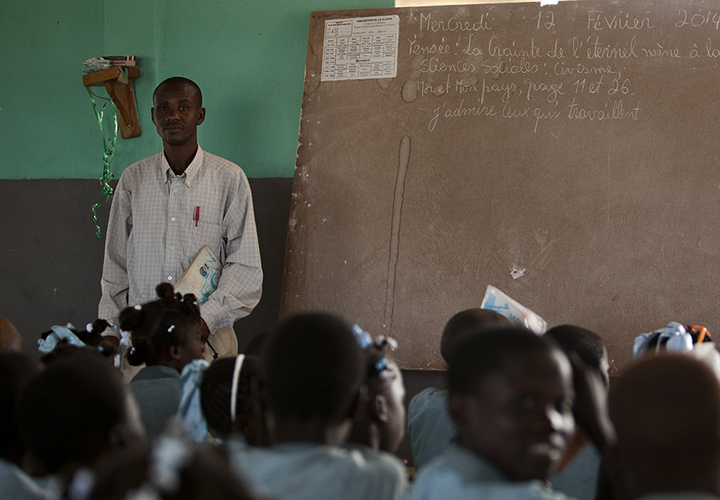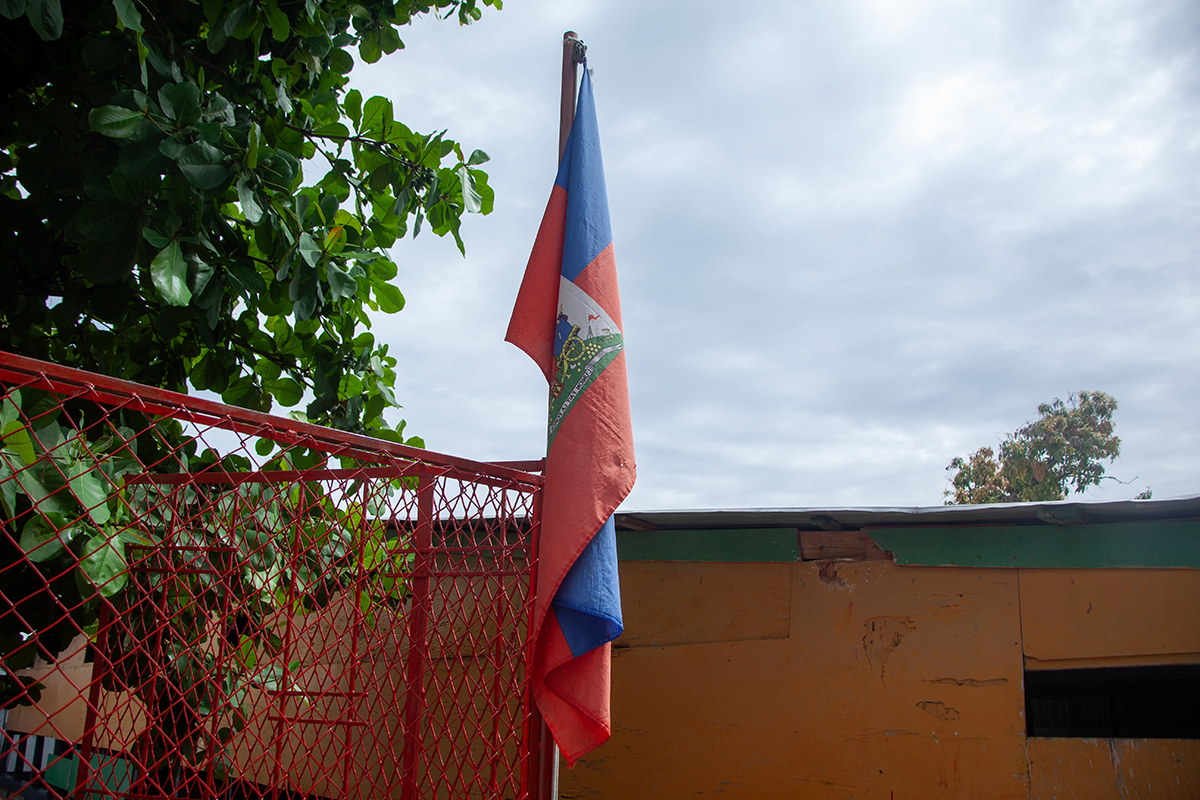Report cards for schools improve learning in Haiti’s private education market

Education is a critical driver of economic growth, social mobility, and individual empowerment. However, governments in low-income countries often struggle to provide equitable, high-quality education. In these contexts, low-cost private schools, typically unregulated and varying in quality, play a major role. A study in Pakistan showed that providing parents with information about school quality, prices, and admission chances helped them make better choices that improved student outcomes. To test the generalizability of these results in other contexts, EGC affiliate Christopher Neilson and coauthors from the Inter-American Development Bank replicated the study’s approach in Haiti through a market-level randomized controlled trial (RCT).
Before the disclosure policy, prices and test scores were not significantly correlated: parents were willing to pay more for schools with better resources, but the market was noisy and schools with higher fees did not necessarily have better educational outcomes.
Disclosing school-level test scores and prices increased average learning outcomes for students in treated markets by 0.22 standard deviations.
Private schools, which make up the majority of schools, improved across the test score distribution. However, improvements were not detected for public schools.
The results corroborated those from the earlier study in Pakistan. On average, private schools in the treatment group with higher baseline test scores increased their market share by approximately 4%, increased student enrollment by 58 students, and raised prices.
In contrast, lower-scoring private schools reduced their prices or closed.
Navigating the Haitian education market
Haiti, the lowest-income country in the Western Hemisphere, has a largely unregulated education market where over three quarters of children attend low-cost private schools. While parents have significant autonomy over school choice, they often make choices based on limited or anecdotal insights. Survey evidence shows that even the poorest families are willing to pay significant fees and travel long distances for their children to attend private schools they perceive as higher quality and safer. However, many families are misinformed about or unaware of the available options and their actual quality.
Most evidence on improving school quality comes from small-scale studies that isolate individual decisions and do not explore the broader market-level effects, such as increased competition. Only one large-scale study in Pakistan (Andrabi et al., 2017) has shown promising results where information provision improved learning outcomes.
Inspired by the market-level evidence from Pakistan, Neilson, a Professor of Economics and Global Affairs at Yale and coauthors Michael Borger, Gregory Elacqua, Isabel Jacas, and Anne Sofie Westh Olsen began their project by conducting baseline school assessments and surveys in 84 educational market clusters in rural Haiti. A standardized national examination assessed educational outcomes of fourth-year primary-school students as well as parents’ and school directors’ perceptions of school quality. The baseline assessment and survey results highlighted that Haitian parents were willing to pay more for schools that were considered high quality, but there was no significant correlation between school fees and student test scores.
“There's a lot of heterogeneity, some schools are much worse than others, and you wouldn't be able to tell otherwise,” Neilson said in an EGC interview. “The prices might not mean anything if nobody's informed.”
 Patrice Noel, Shutterstock
Patrice Noel, Shutterstock
The power of information
For the RCT, the researchers randomly assigned half of the 84 market clusters to the treatment group, where parents were provided with various forms of information about school quality: score cards with rankings of schools based on student test scores in the baseline assessment (represented by one to five stars), scripted workshops where parents were presented with information, and encouragement and guidance for parents to collectively meet with school directors to seek to improve the quality of instruction.
A year after the rollout of the intervention, Neilson and coauthors conducted endline examinations identical to the baseline assessment. In the treatment group, test scores in private schools had a statistically significant improvement over baseline (0.22 standard deviations), while test scores in public schools remained unchanged. Moreover, private schools with high baseline test scores saw their market share increase by approximately 4%–5%. Prices at these schools also increased, while prices at low-scoring private schools decreased, suggesting schools adjusted pricing in response to changes in demand. This represents an improvement in market efficiency, with educational resources allocated in ways that better match what families want.
“It’s exciting to see these results,” said Asim Ijaz Khwaja, Director of the Harvard Center for International Development and a coauthor of the original Pakistan-based study. “The more we test this low-cost intervention across different contexts, the better we can understand how broadly the findings apply, and the more useful they become for improving policy and outcomes for children.”
Policy implications for low-income education systems
Neilson’s study suggests that when parents are provided with simple information about school quality and prices, they can make decisions that better suit their demands. At the market level, the study's results confirm that information disclosure improves market efficiency, decreasing resource misallocation and improving educational quality.
“To gather and disseminate information is one of the highest return-on-investment efforts the Ministry of Education can do,” Neilson said. “It offers a line of defense against the worst outcomes” – in which low-income families spend a significant amount of money but do not receive quality education – and “helps in the poorest areas, the places we have least ability to reach.”
While information disclosure does have potential drawbacks, such as pushing less-competitive schools into vicious cycles of fewer students, less funding, and worsening quality, Neilson underscored the challenges of the educational context in low-income countries like Haiti. The choice is not between a good or better school, but between a good school or one with no qualified teachers, inadequate infrastructure, and ultimately unsatisfactory educational outcomes. In these contexts, information disclosure offers the potential for systemic improvements.
Research Summary by Iris Zhao